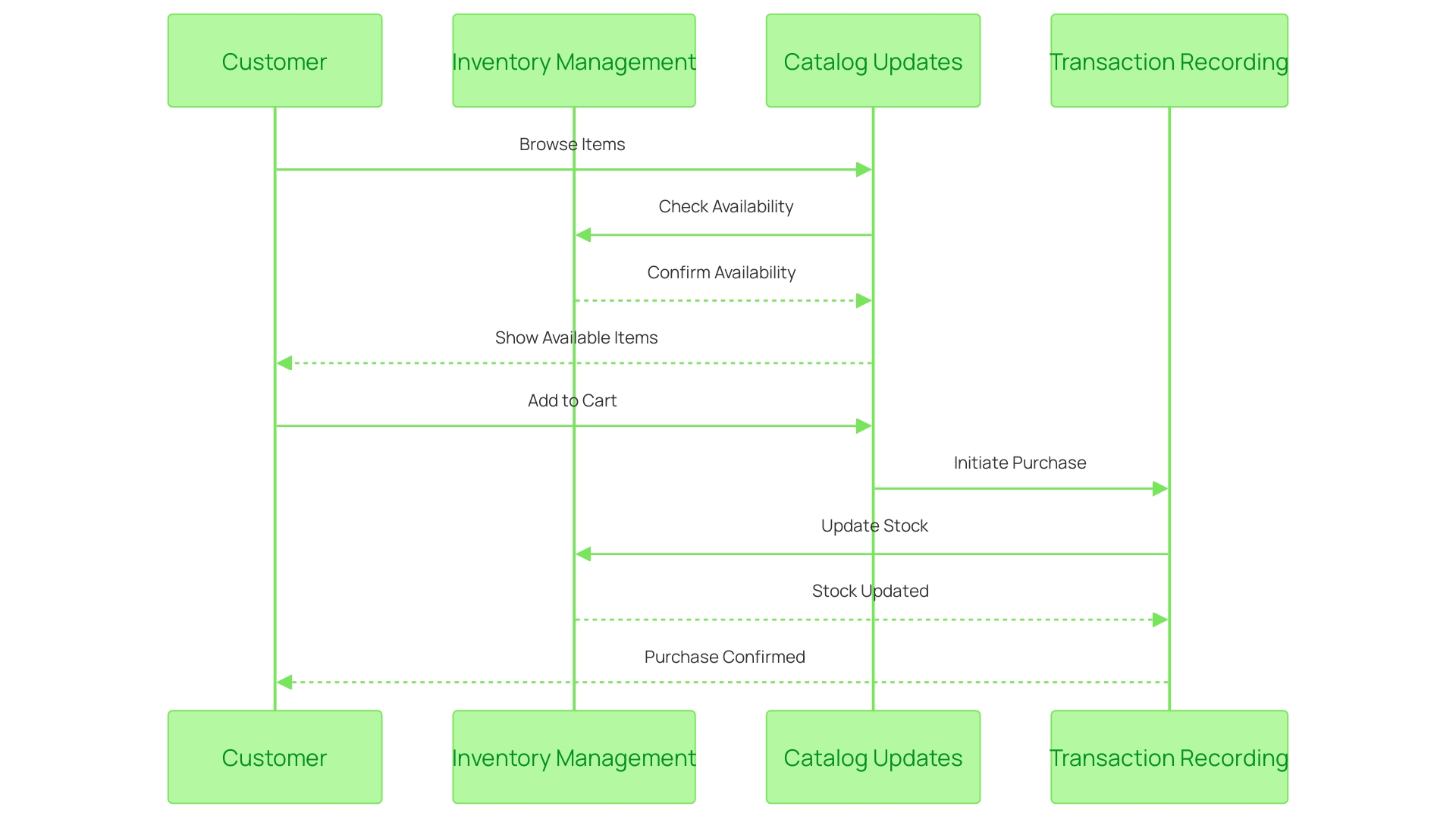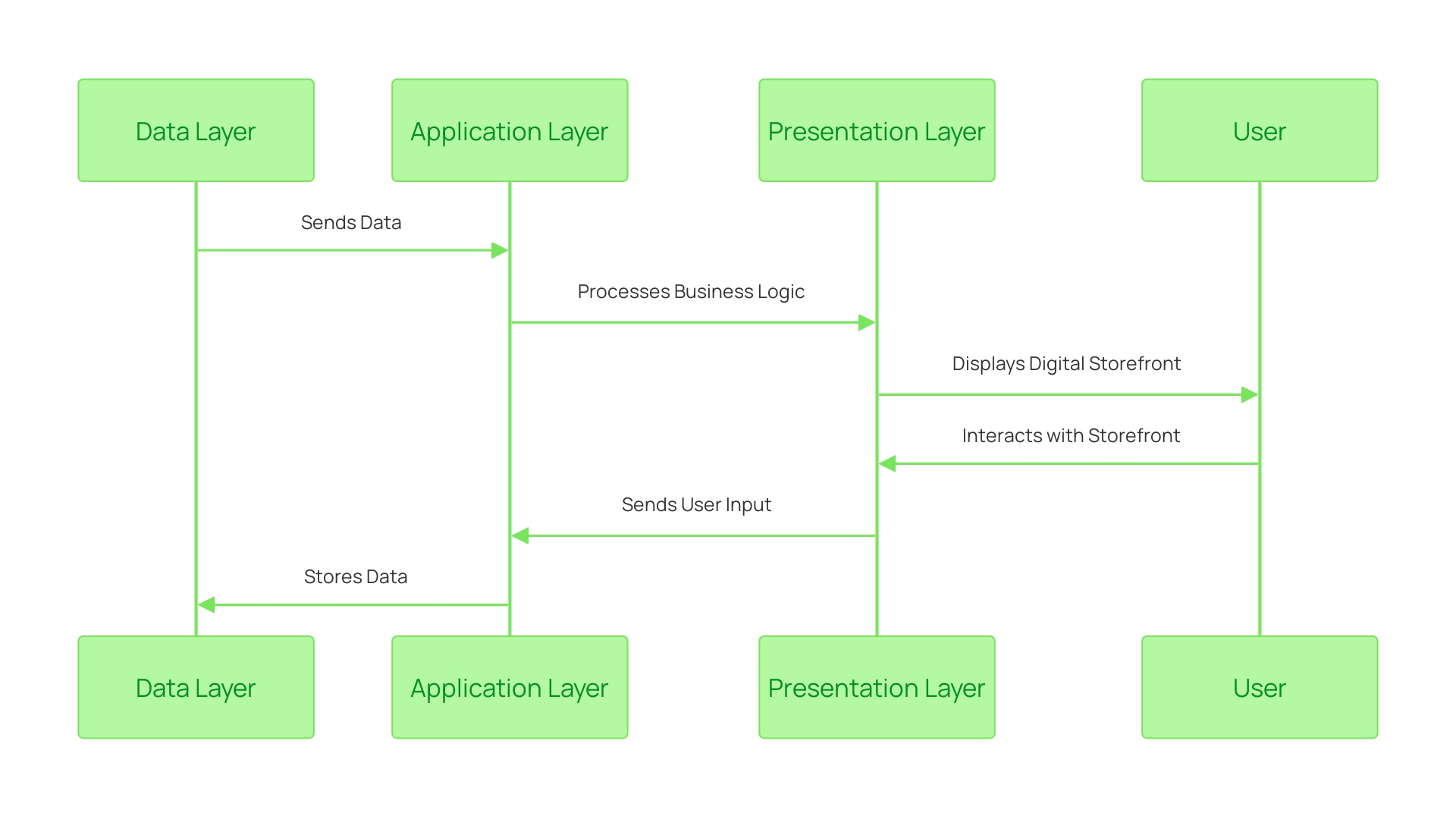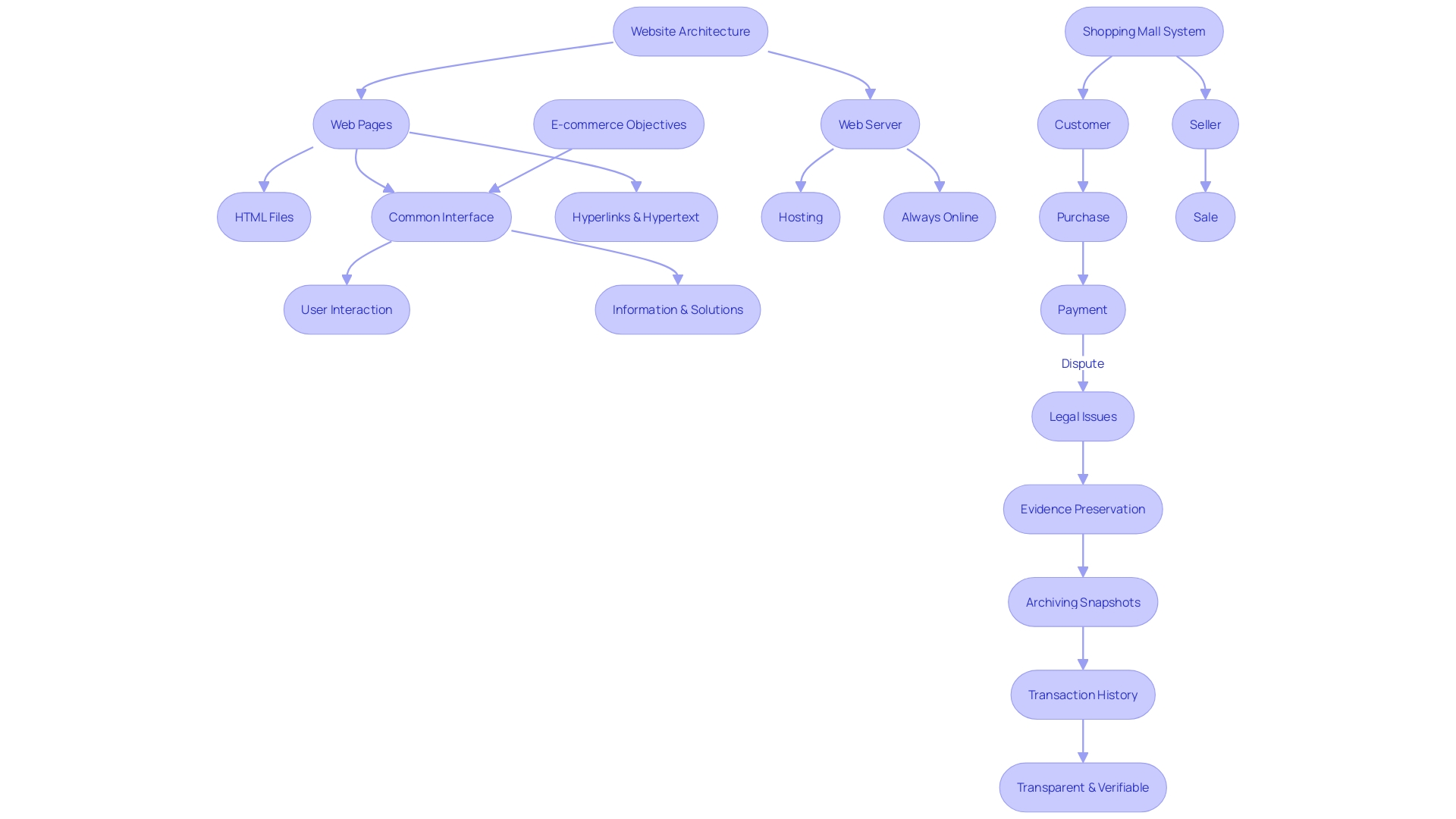Introduction
E-commerce architecture is the backbone of an online store, dictating how it functions and integrates various services to provide a seamless shopping experience. In this article, we will explore the key components of e-commerce architecture and delve into the layers that make up its structure. We will also discuss the different types of e-commerce architectures and their benefits, with a special focus on the advantages of microservices architecture.
Additionally, we will highlight the importance of creating effective e-commerce architecture diagrams, such as entity relationship diagrams, sequence diagrams, and component diagrams, to ensure a robust and reliable system. By understanding the intricacies of e-commerce architecture and utilizing visual tools, businesses can build adaptable and data-driven platforms that cater to the evolving needs of the global consumer.
Understanding E-commerce Architecture Components
E-commerce structure is the blueprint that outlines how an online store operates, integrates various services, and provides a streamlined shopping experience. At its core are multiple services, such as inventory and product management, that interact seamlessly. For example, when inventory levels change, this data is immediately reflected in the catalog service, ensuring that customers have up-to-date information on product availability. The structure must also protect the integrity of transaction records to prevent disputes and ensure legal compliance. This is achieved through meticulous archiving of transactional data, similarly to how a snapshot system records each version of an article or comment to preserve evidence. In the constantly changing digital market, where stores without checkout are emerging and online sales are increasing despite economic uncertainties, it is crucial to maintain a strong and flexible online trading infrastructure to meet the needs of global consumers and remain competitive. The structure is not just a static framework but a dynamic ecosystem that must support real-time interactions and transactions across diverse markets.

Layers of E-commerce Architecture
The structure of an online shopping platform is a well-organized framework, similar to a building with multiple levels, each serving a specific function. At the base, we have the data layer, serving as the foundation by handling data storage and management. It's the bedrock that supports all transactions, akin to the meticulous record-keeping needed to preserve evidence in a shopping mall system dispute, ensuring integrity and accountability.
Moving up, the application layer forms the core engine, processing business logic, and managing user requests. This is where the magic happens, with services like inventory and product management working tirelessly behind the scenes. It's the hub that keeps the commerce machine humming, updating product availability in real-time to power search and filter functions, just as when a new quantity update in the inventory service immediately reflects in the catalog.
At the top, we encounter the presentation layer, the user-facing interface where interactions with the digital storefront happen. This layer is the front desk of the shopping experience, where the presentation is as crucial as the functionality to attract and retain customers, especially as e-commerce trends evolve and consumer behaviors shift post-pandemic.
This tri-layered structure not only guarantees a clear separation of concerns, streamlining development and maintenance, but also supports scalability and maintainability as the business grows and adapts to new challenges in the ever-evolving digital marketplace.

Types of E-commerce Architectures
E-commerce structures are not a one-size-fits-all solution. Each type comes with distinctive advantages designed to meet the needs of various business scales and interaction models. For instance, a two-tier structure could be appropriate for small to medium-sized enterprises seeking a simple setup that manages transactions and basic customer interactions. In contrast, a three-tier structure provides greater scalability and is skilled at handling intricate business logic, making it well-suited for larger companies with higher transaction volumes.
Microservices design, however, stands out for its modular approach. Each service in a microservices structure operates independently, which allows for agile development, testing, and deployment — facets that are crucial in today's fast-paced retail environment. This architecture is particularly beneficial for companies experiencing significant growth or those needing to adapt quickly to market changes. For instance, the success story of Dunelm Group plc highlights how transitioning to a microservices approach can support substantial digital platform activity, which, for them, constitutes about 35% of the company's revenue.
Furthermore, microservices play a pivotal role in leveraging the goldmine of client data that e-commerce businesses collect. With the ability to deploy data science applications on independent microservices, retailers can gain valuable insights into customer behavior, optimize the user experience, and effectively target both new and existing customers. As we've seen with the evolving retail landscape, the ability to adapt and utilize data-driven strategies is key to staying competitive.
Considering the current economic uncertainties and the challenges encountered by the retail sector, including the potential financial instability of some large retailers, the flexibility and resilience provided by microservices framework could be extremely beneficial. It allows for efficient scaling and quick adaptation to market trends, which is essential when consumer spending patterns are volatile due to macroeconomic pressures.
In conclusion, when developing your online business platform, it is essential to take into account a structure that not only fulfills your present requirements but also offers the flexibility to adapt to your business and the market. Two-tier and three-tier structures have their place, but microservices design is becoming an increasingly popular choice for those looking to build a robust, adaptable, and data-driven online trading system.
Creating Effective E-commerce Architecture Diagrams
E-commerce system visuals are crucial resources that depict the structure and components of an e-commerce system. They serve as a blueprint, demonstrating the interplay between various elements of the platform, thereby facilitating a deeper understanding and communication of the architecture design. Among these, the entity relationship (ER) is a critical component. An ERD displays the data model of a database, showcasing the logical structure through graphical means. It is instrumental in delineating the relationships between the different entities within a system, such as 'Customer', 'Order', and 'Product', each with its own set of attributes like 'Name', 'Price', or 'Quantity'. This visual tool can prove invaluable, especially in complex scenarios where, for instance, a customer's purchase leads to a dispute requiring the examination of transactional records. In such a case, the ERD can provide a clear and concise reference for all stakeholders, including legal teams, ensuring that every piece of evidence is preserved and easily accessible.
In addition, sequence charts and component charts play a vital part in the structure of online business. Sequence illustrations demonstrate the interaction over time, providing a step-by-step manual to the processes within the system, while component breakdowns divide the system into its constituent parts, clarifying the functionality and scalability of the platform. In the context of online business transactions, where every step—from choosing a product to finalizing a purchase—can be crucial, these visual representations become essential for maintaining a strong and dependable architecture. They enable developers and stakeholders to anticipate potential disputes and technical challenges by providing a clear framework for the platform's operations.
Including these visual illustrations not only assists in the design and problem-solving of the database but also guarantees that the online trading platform can handle real-life difficulties, like those faced in the Shopping Mall system, where maintaining a transparent and verifiable transaction history is crucial. Leveraging the insights from these diagrams, e-commerce professionals can enhance their platform's performance, stability, and user experience, ultimately driving the success of their online venture.

Conclusion
In conclusion, e-commerce architecture is crucial for building a successful online store. It determines how the store operates and integrates services to provide a seamless shopping experience. Microservices architecture is a popular choice for its modular approach, allowing for agile development and leveraging customer data.
Effective e-commerce architecture diagrams, such as entity relationship diagrams, sequence diagrams, and component diagrams, are essential for understanding and communicating the system's structure and processes. These visual tools ensure a robust and reliable architecture and preempt potential disputes and technical challenges.
By understanding e-commerce architecture and utilizing visual tools, businesses can build adaptable and data-driven platforms that cater to the evolving needs of the global consumer. Microservices architecture offers flexibility and resilience, making it ideal for growth and quick adaptation to market changes.
Incorporating effective e-commerce architecture diagrams enhances performance, stability, and user experience. Leveraging these tools drives the success of online ventures and keeps businesses competitive in the ever-evolving digital marketplace.
Ready to build an adaptable and data-driven platform for your online store? Contact us today!





